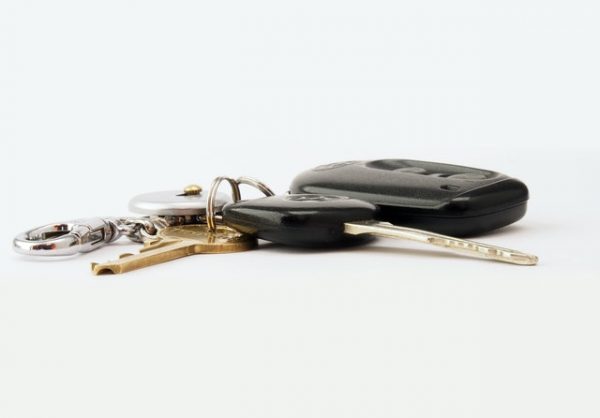Many people who have cars with alternators also have boats or RVs that use deep-cycle batteries. People often wonder if they can use their car’s alternator to charge their boat or RV battery. In this blog post, we’ll answer that question and provide some tips on how to properly charge a deep cycle battery with an alternator.
Main point
Deep cycle batteries are designed to hold a charge for long periods of time.
An alternator could charge a deep cycle battery but it will take longer because the alternator output is 12V and deep cycle batteries are 24V.
Jumper cables are not strong enough to charge a deep cycle battery.
You can charge a deep-cycle battery while it’s in use, as long as the battery is getting more power than it’s giving away.
A high quality deep cycle battery can last up to two months without recharging.
What are deep cycle batteries?
A deep cycle battery is a type of lead-acid battery designed to be regularly discharged and recharged. Unlike car batteries, which only need to be discharged briefly, deep-cycle batteries are designed to withstand discharging for long periods of time. As a result, deep-cycle batteries are often used in applications where a constant supply of power is needed, such as in boats, RVs, golf carts, and solar panels.
Batteries are an essential part of many electronic devices, from cell phones to cars. Most batteries are designed to provide a short burst of power, after which they must be recharged. However, there are some batteries that are designed for long-term use.
These batteries, known as deep-cycle batteries, are often used in boats and RVs, and in solar power systems. Deep cycle batteries work by slowly releasing their stored energy over a long period of time. This allows them to be used for extended periods without the need for frequent recharging.
Also, deep-cycle batteries are less likely to suffer from the “memory effect”, which can reduce the performance of other types of batteries over time. As a result, deep cycle batteries are an ideal choice for applications where extended use is required.
There are many different types of deep cycle batteries. The most common type is the lead acid battery, which is inexpensive and has a long life. However, lead acid batteries are also very heavy, making them difficult to transport. Lithium-ion batteries are another popular option, as they are much lighter than lead-acid batteries.
However, they are also more expensive and have a shorter lifespan. Another option is the nickel-cadmium battery, which is similar to lithium-ion batteries in terms of weight and cost. However, nickel-cadmium batteries have a shorter lifespan and can be more difficult to recycle.
Can a car alternator charge a deep cycle battery?
Alternators are designed to charge car batteries that are used to start the engine and power accessories. These batteries have a short-term energy storage capacity. But can a car alternator charge a deep-cycle battery that is the complete opposite of car batteries?
It is possible to use an automobile alternator to charge a deep cycle battery, but the efficiency and speed of the charge will depend on the voltage of the deep cycle battery. Automotive alternators have a voltage output between 13.8 and 14.3 volts. So a car alternator will be able to charge a 12V deep cycle battery effectively and quite quickly. However, a car alternator will take longer to charge a 24V deep cycle battery, but charging is possible.
Typically, it takes around six hours for an alternator to charge a 12V battery and up to twelve hours to charge a 24V battery. However, the exact time will depend on the power of the alternator. If the battery is considerably depleted, charging may take longer. Similarly, if the alternator is weak or there is electrical resistance in the charging system, it will take longer for the battery to charge.
The alternator produces AC power, which must be converted to DC power before it can be used to charge the battery. This can be done with a rectifier, which is usually included as part of the charging system. Once the power is converted, the alternator can be used to charge the deep cycle battery like any other charger.
Of course, it is important to keep an eye on the charging process and make sure that the battery does not overcharge. But with proper control, an automobile alternator can be used to keep a deep-cycle battery charged and ready for use.
Can a deep cycle battery be charged with jumper cables?
Although people often think of jumper cables as a way to jump start a car with a dead battery, you can actually use them for other purposes as well. For example, you can use jumper cables to charge a deep cycle battery.
Jumper cables are designed to provide a quick burst of power, which is perfect for starting a car. However, deep-cycle batteries require a slower, more constant charge to reach full capacity. As a result, the jumper cables are not strong enough to fully charge a deep cycle battery. However, the jumper cables are strong enough to charge the deep cycle battery at least halfway.
Here’s how to charge a deep cycle battery with jumper cables: First, make sure the donor battery has the same voltage as the deep cycle battery. Next, connect the positive terminal of the donor battery to the positive terminal of the deep-cycle battery. Next, connect the negative terminal of the donor battery to the negative terminal of the deep cycle. Finally, start the donor vehicle’s engine and let it run for about two hours. This will give the deep cycle battery time to charge. Just be sure to disconnect the jumper cables in reverse order once you’re done.
Can a deep cycle battery be charged while in use?
When your car battery dies, you can usually restart your car by connecting it to another battery. However, this is not the case for deep cycle batteries. Deep-cycle batteries are designed to discharge and recharge over a period of time and cannot be jump-started like a car battery. So if your deep cycle battery dies, you’ll need to charge it before you can use it again.
The good news is that you can charge a deep cycle battery while it’s in use. You just have to make sure that the battery is receiving more energy than it is giving up. This means that if you are charging the battery with a charger that gives 12V, make sure your battery draws less than that.
Charging a deep cycle battery while it is in use is really good for the battery. In fact, this is the best way to extend battery life. By regularly charging your deep cycle battery, you will help prevent sulfation and extend its overall life.
A deep-cycle battery is a necessary component in many types of electronic equipment, such as RVs, boats, and golf carts. Deep-cycle batteries are designed to be discharged and recharged regularly and can last for many years with proper care. An important aspect of caring for a deep cycle battery is making sure it is properly charged.
To charge a deep-cycle battery, you’ll need a charger specifically designed for deep-cycle batteries. These chargers are available at most auto parts stores. Once you have the correct charger, simply follow the instructions that came with the charger to properly charge your battery.
How long can a deep cycle battery go without charging?
A deep cycle battery is designed to be discharged and recharged many times. However, if it is not used for a long period of time, it will slowly lose its charge.
While the exact amount of time a deep-cycle battery can go without charging depends on several factors, including temperature and build quality, most batteries will begin to show signs of discharge after about two months of inactivity.
If left uncharged for too long, a deep cycle battery will eventually go bad and may need to be replaced. Therefore, it is important to regularly check the condition of the battery and fully charge it at least once every six months to keep it in good working order.
Deep-cycle batteries are designed to provide a long, consistent discharge of energy over an extended period of time. By contrast, most other types of batteries are designed for short bursts of high power. Deep-cycle batteries get their name from the fact that they are often used in deep-cycle applications such as golf carts, RVs, and boats.
To discharge a deep cycle battery, the electrodes must be slowly and evenly corroded by the electrolyte. This process is slow and gradual, which is why deep-cycle batteries can hold a charge for so long. However, over time, the electrodes will eventually wear out and the battery will need to be replaced.




